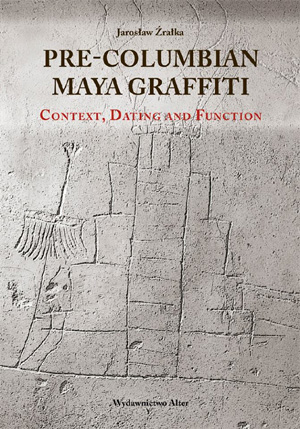Nowa publikacja dra Jarosława Źrałki o graffiti Majów!

PRE-COLUMBIAN MAYA GRAFFITI: context, dating and function.
Jarosław Źrałka
Graffiti have always been a popular means of expression for people from different social strata in ancient as well as modern societies. They constitute a rich source of information on both the daily life and religious activities of the people who created them. Although ancient graffiti are mostly known from the Old World, especially from the Roman Empire or Egypt, they were also very popular in the pre-Columbian world. Ancient Maya civilisation, which once thrived in the rainforests of Mexico and Central America, has an extremely extensive corpus of graffiti. Many Maya sites have graffiti of various types, including inscribed, painted, gouged, impressed and sketched with charcoal. Maya graffiti were usually executed on the plaster surfaces of architectural buildings: chiefly on walls, vaults, floors, as well as benches and other architectural elements. Most examples are figural images that usually represent people, animals, architectural buildings and geometrical designs. They may also depict supernatural beings, symbolic and religious objects and many other subjects, usually related to the socio-political and religious lives of the Maya elites.
Despite architectural graffiti being broadly present in various Maya sites, they remain a relatively rarely studied phenomenon. Little interest has been shown in this kind of art and Maya graffiti tend to be published as minor appendices to larger archaeological reports. Moreover, in the case of many Maya sites, the graffiti were not even documented or recorded. This attitude of sidelining Maya graffiti stemmed from the fact that many scholars considered graffiti to be trivial scribbles or the inconsequential work of the Postclassic or Colonial populations squatting in Maya palaces and temples after they had been abandoned by their original inhabitants. Such long held views in the field are changing; recent studies by various scholars have shown that the meaning of graffiti is far more complex and sophisticated than previously thought. The current view is that graffiti were made by various authors in different periods of time and by people representing different social groups. This book constitutes a comprehensive treatment of the subject of graffiti and provides comparative iconographic data on graffiti from various Maya sites. It also has ample and up-to-date information about graffiti, including its dating, meaning, techniques of rendition and function.
Osoba publikująca: Piotr Kołodziejczyk

